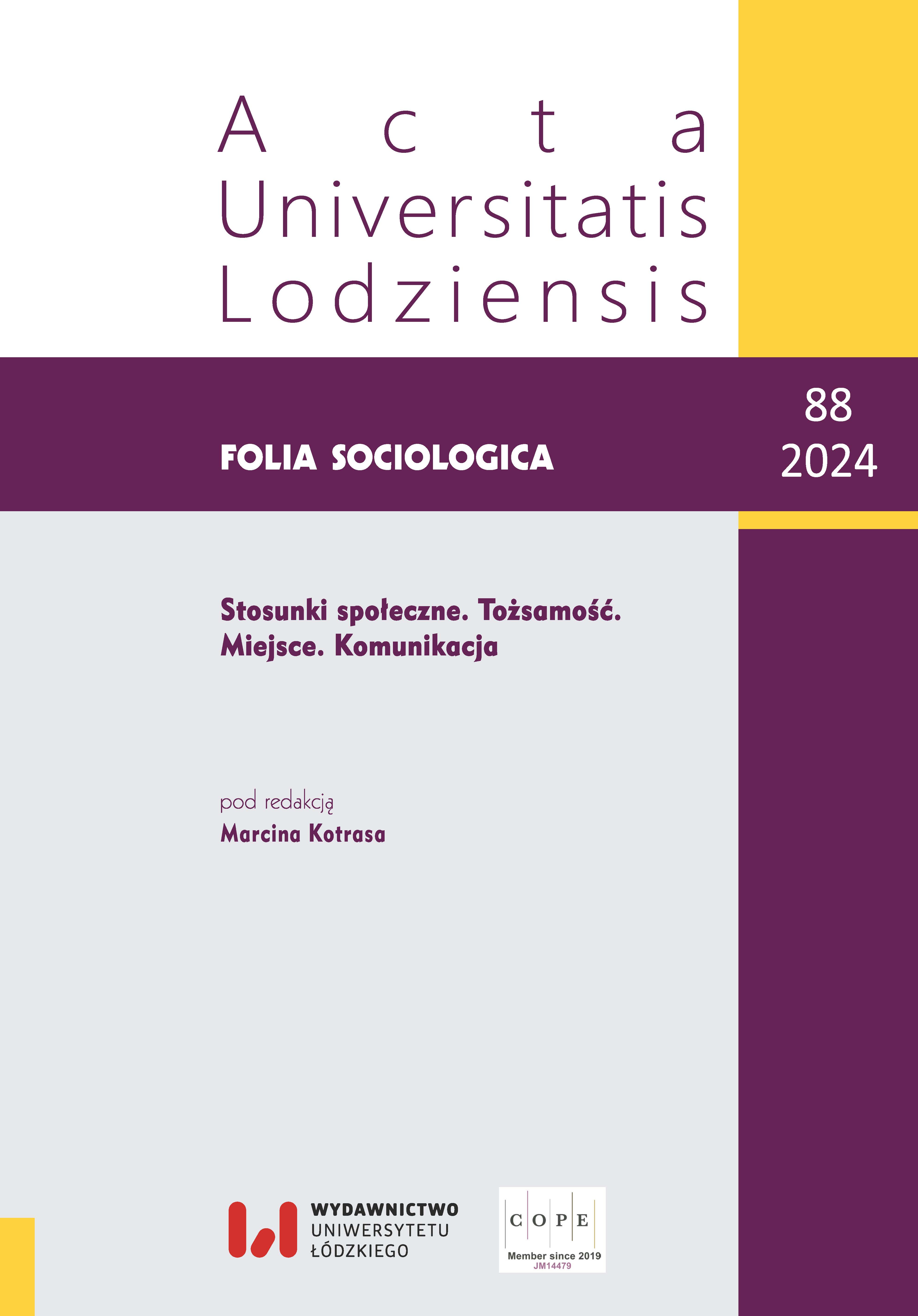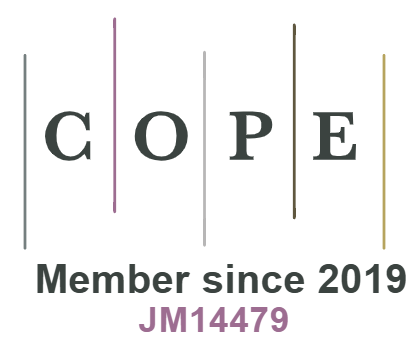School architecture, its adaptability and forms of student’s life at school: a case study of the art high school in Cracow
DOI:
https://doi.org/10.18778/0208-600X.88.07Keywords:
architecture, art high school, modern architecture, students’ life, qualitative researchAbstract
The case study research presented here focuses on the modern building of the State High School of Fine Arts in Cracow. The objective was to examine the adaptability of school architecture in response to new educational challenges. The survey gathered data using a paper questionnaire involving most students (N = 167). Mixed techniques were used to collect data, including participant drawings and free statements. The investigated issues included evaluating the school’s responsiveness to students’ needs, understanding the meaning of places, identifying students’ favourite places, and exploring the emotional relationship and identification with school goals and use of school space. The findings indicate that students value the school’s artistic ambience, desire greater space flexibility for participation and creativity, and a dedicated area for everyday needs.
References
Appleton J.J., Christenson S.L., Kim D., Reschly A.L. (2006), Measuring cognitive and psychological engagement: Validation of the Student Engagement Instrument, “Journal of School Psychology”, no. 44.
Google Scholar
DOI: https://doi.org/10.1037/t00876-000
Barrett P., Davies F., Zhang Y., Barret L. (2017), The Holistic Impact of Classroom Spaces on Learning in Specific Subjects, “Environment and Behavior”, vol. 49, no. 4.
Google Scholar
DOI: https://doi.org/10.1177/0013916516648735
Blumer H. (1969), Symbolic Interactionism: Perspective and Method, University of California Press, Berkeley.
Google Scholar
Bourdieu P. (2005), Dystynkcja. Społeczna krytyka władzy sądzenia, transl. Piotr Biłos, Wydawnictwo Naukowe Scholar, Warszawa.
Google Scholar
Bourdieu P., Wacquant L.J.D. (2001), Zaproszenie do socjologii refleksyjnej, transl. A. Sawisz, Oficyna Naukowa, Warszawa.
Google Scholar
Canter D. (1977), The psychology of place, Architectural Press, London.
Google Scholar
Cresswell T. (2004), Place: a short introduction, Blackwell Publishing, Malden.
Google Scholar
Frydenberg E., Ainley M., Russell V. (2005), Schooling Issue Digest: Student Motivation and Engagement. https://findanexpert.unimelb.edu.au/scholarlywork/270455-schooling-issue-digest-student-motivation-and-engagement (accessed: 15.06.2021).
Google Scholar
Giddens A. (2006), Sociology, (5th ed.), Polity Press, Malden.
Google Scholar
Giroux H.A. (2019), Toward a Pedagogy of Educated Hope under Casino Capitalism, „Pedagogia y Saberes”, no. 50.
Google Scholar
DOI: https://doi.org/10.17227/pys.num50-9507
Gläser-Zikuda M., Ziegelbauer S., Rohde J., Conrad M., Limprecht S. (2012), Innovative Learning Environments. Inventory case study: The Jenaplan School of Jena, Centre for Educational Research and Innovation, OECD, 2012. https://www.oecd.org/education/ceri/DEU.THU.003.Finalwihcover.pdf
Google Scholar
Goffman E. (2000), Człowiek w teatrze życia codziennego, transl. H. Datner-Śpiewak i P. Śpiewak, Wydawnictwo KR, Warszawa.
Google Scholar
Gruenewald D.A. (2003), The Best of Both Worlds: A Critical Pedagogy of Place, “Educational Researcher”, vol. 32, no. 4.
Google Scholar
DOI: https://doi.org/10.3102/0013189X032004003
Hershberger R.G. (1992), A study of meaning and architecture, [w:] Nasar J.L. (red.), Environmental Aesthetics: Theory, Research & Applications, Cambridge University Press, Cambridge.
Google Scholar
Hertzberger H. (2008), Space and Learning, 010 Publishers, Rotterdam.
Google Scholar
Hillier B., Hanson J. (1993), The social logic of space, Cambridge University Press, Cambridge.
Google Scholar
Jacyno M. (1997), Kontrkultura ubóstwa. Pierre’a Bourdieu koncepcja reprodukcji klas społecznych a problem reprodukcji otwartej, “Studia Socjologiczne”, no. 3(146).
Google Scholar
Janowski A. (1995), Uczeń w teatrze życia szkolnego, Wydawnictwa Szkolne i Pedagogiczne, Warszawa.
Google Scholar
Lackney J.A. (2015), History of the Schoolhouse in the US, [w:] Rotraut W. (red.), Schools for the Future: Design Proposals from Architectural Psychology, Springer Fachmedien, Wiesbaden.
Google Scholar
DOI: https://doi.org/10.1007/978-3-658-09405-8_2
Martyniuk W. (2019), O doświadczaniu szkoły: studium fenomenologiczne szkolnej codzienności z perspektywy uczniów, Impuls, Kraków.
Google Scholar
McLaren P. (1999), Schooling as a ritual performance: Toward a political economy of educational symbols and gestures, (3rd ed), Rowman & Littlefield Publishers Inc., Lanham.
Google Scholar
Meighan R., Siraj-Blatchford I. (1997), A sociology of educating, Continuum International Publishing Group Ltd., London.
Google Scholar
Nielsen T.W. (2004), Rudolf Steiner’s Pedagogy of Imagination: A Case Study of Holistic Education, Peter Lang, Bern.
Google Scholar
Price R.H., Bouffard D.L. (1974), Behavioral appropriateness and situational constraint as dimensions of social behaviour, “Journal of Personality and Social Psychology”, no. 30(4).
Google Scholar
DOI: https://doi.org/10.1037/h0037037
Read H. (1943), Education Through Art, Faber and Faber Limited, London.
Google Scholar
Robinson K. (2020), Building creativity into school, [w:] Murray H., White T. (red.), Planning Learning Spaces: A Practical Guide for Architects, Designers and School Leaders, Laurence King Publishing, London.
Google Scholar
Russel J.A., Lanius U.F. (1984), Adaptation level and the affective appraisal of environments, “Journal of Environmental Psychology”, no. 4.
Google Scholar
DOI: https://doi.org/10.1016/S0272-4944(84)80029-8
Sfard A. (1998), On Two Metaphors for Learning and the Dangers of Choosing Just One, „Educational Researcher”, vol. 27, no. 2.
Google Scholar
DOI: https://doi.org/10.2307/1176193
Sigurdardóttir A.K., Hjartarson T. (2011), School Buildings for the 21st Century. Some Features of New School Buildings in Iceland, “CEPS Journal”, vol. 1, no. 2.
Google Scholar
DOI: https://doi.org/10.26529/cepsj.426
Strauss A.L. (1993), Continual permutations of action, Aldine De Gruyter, New York.
Google Scholar
Uline C. (1997), School Architecture as a Subject of Inquiry, „Journal of School Leadership”, t. 7, nr 2.
Google Scholar
DOI: https://doi.org/10.1177/105268469700700204
Uline C., Tschannen-Moran M. (2008), The walls speak: the interplay of quality facilities, school climate, and student achievement, “Journal of Educational Administration”, vol. 46, no. 1.
Google Scholar
DOI: https://doi.org/10.1108/09578230810849817
Walden R. (2015), Introduction, [w:] Rotraut W. (red.), Schools for the Future: Design Proposals from Architectural Psychology, Springer Fachmedien, Wiesbaden.
Google Scholar
DOI: https://doi.org/10.1007/978-3-658-09405-8
Wałaszewski K. (2018), Tysiąc szkół na Tysiąclecie: Szkoły Tysiąclecia – architektura, propaganda, polityka, Księży Młyn Dom Wydawniczy, Łódź.
Google Scholar
Włodarczyk M. (2007), Liceum Sztuk Plastycznych w Krakowie, “Wiadomości Konserwatorskie”, no. 22.
Google Scholar
Published
How to Cite
Issue
Section
License

This work is licensed under a Creative Commons Attribution-NonCommercial-NoDerivatives 4.0 International License.










